Tarawa is the capital of Kiribati, specifically South Tarawa. Tarawa is known for its significant role in World War II, particularly the Battle of Tarawa.
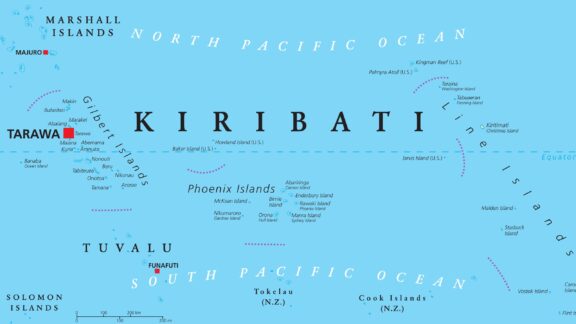
Tarawa is an atoll and the main administrative and commercial center of Kiribati. The city is home to bustling communities, schools, and governmental buildings, and its central Pacific location makes it a unique and significant hub within the island nation.
Where is Tarawa?
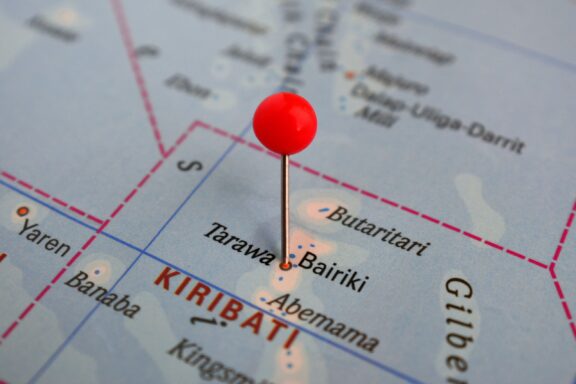
Tarawa is approximately halfway between Hawaii and Australia in the vast expanse of the central Pacific Ocean. It lies just a little north of the equator. As part of the Gilbert Islands group, Tarawa is one of the 33 atolls and reef islands that make up the nation of Kiribati.
The atoll of Tarawa boasts numerous islets, with South Tarawa shining as its bustling administrative and residential heart, nestled in the northern reaches of the Gilbert Islands archipelago.
History of Tarawa
Several millennia ago, Tarawa’s sandy shores witnessed the arrival of Micronesian seafarers. These early pioneers, using their remarkable navigational skills, established thriving communities.
With time, a distinct culture known today as I-Kiribati flourished. The maneaba, or meeting houses, were more than just structures; they embodied the spirit of community gatherings and decision-making.
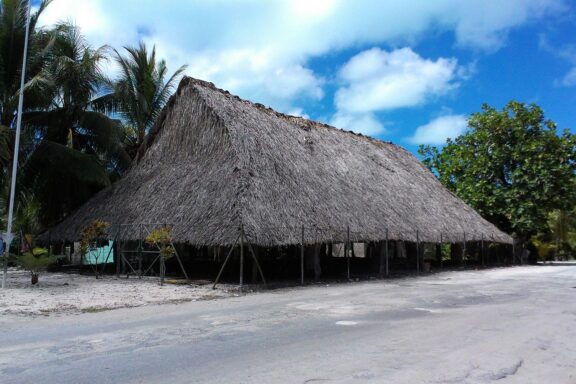
The 18th century marked a transformative period for Tarawa. European explorers ventured into the Gilbert Islands, with Captain Thomas Gilbert being a notable figure.
This contact brought traders, missionaries, technologies, practices, and a fusion of beliefs. Despite these influences, the indomitable spirit of the I-Kiribati people ensured their traditions remained vibrant.
As the 1800s progressed, the British saw strategic and economic potential in the Gilbert Islands, ushering in the colonial phase for Tarawa.
Under British oversight, Tarawa experienced socio-economic shifts. The copra trade, for instance, became pivotal, connecting Tarawa to global commerce and influencing its socio-economic fabric.
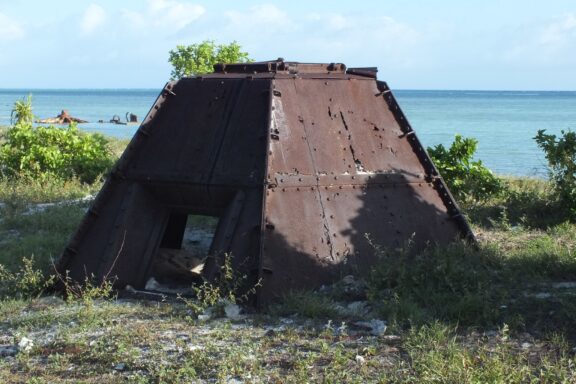
The Japanese noticed Tarawa’s strategic position, leading to its occupation during WWII. However, 1943 marked a turning point. The U.S. Marines launched an ambitious campaign to reclaim Tarawa.
This battle, laden with valor and sacrifices, not only reshaped Tarawa’s landscape but also imparted invaluable lessons for subsequent military operations in the Pacific.
A collective aspiration for identity and self-rule characterized the post-war era. As the 20th century reached its midpoint, the winds of change swept through the Gilbert Islands.
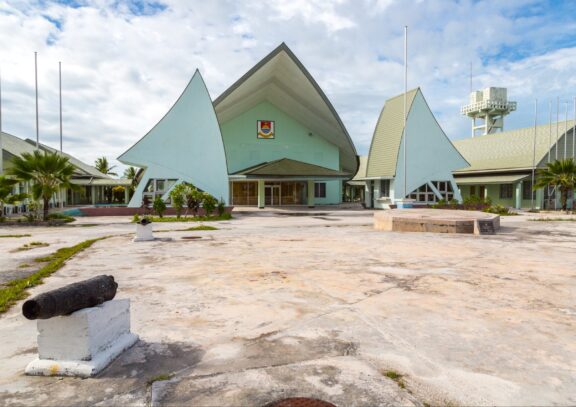
The separation of the Ellice Islands was a precursor to the birth of a new nation. On July 12, 1979, these aspirations came to fruition when the nation gained independence, with Tarawa proudly serving as its capital.
In the contemporary period, Tarawa emerged as the nerve center of Kiribati. Its significance transcended administrative functions. As more people gravitated towards the capital, urban challenges surfaced.
Concurrently, Tarawa grappled with global challenges, most notably the existential threat of rising sea levels due to climate change.
Features of Tarawa
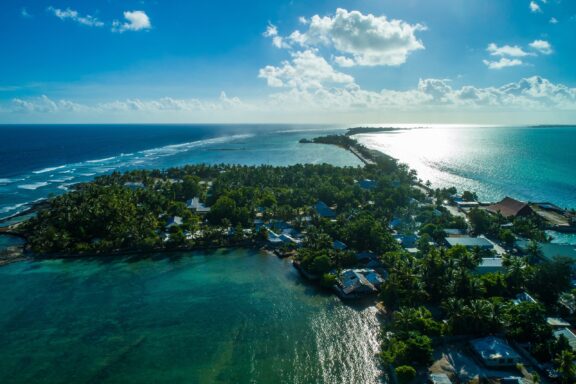
Tarawa stands out as a unique blend of traditional Pacific island culture and the evolving dynamics of a modernizing nation. The atoll exudes natural beauty with its shimmering lagoons, verdant vegetation, and sandy beaches that merge with the vast oceanic expanse.
One of the most distinct features of Tarawa is its geographical layout. As an atoll, it comprises a series of islets connected by causeways, creating a continuum of vibrant districts, each bringing flavor and energy to the capital.
In essence, Tarawa embodies the spirit of Kiribati – a harmonious blend of time-honored traditions, historical milestones, and a forward-looking vision, all set against the backdrop of the vast, azure Pacific.
Geography and Climate

Tarawa is an atoll, a formation of coral islets that encircle a central lagoon, either partially or entirely. Its terrain is relatively flat, with the highest points only a few meters above sea level. This unique geography offers stunning vistas of turquoise lagoons juxtaposed with lush vegetation.
The climate of Tarawa is equatorial, characterized by consistent temperatures year-round, usually ranging from 26 °C (79 °F) to 32 °C (79 90 °F). The region has two main seasons: the wet season from November to April and the dry season from May to October. However, its proximity to the equator means that rain can occur at any time of the year.
Due to climate change, Tarawa is witnessing more frequent and severe weather events, including king tides and cyclonic patterns.
Population
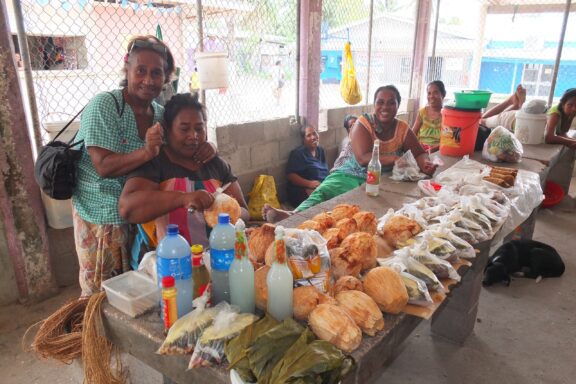
South Tarawa is home to around 28,000 people. The city is densely populated and home to a significant portion of Kiribati’s total population. I-Kiribati people make up the majority, with their rich cultural heritage and traditions playing a vital role in daily life.
The official language is Gilbertese (or Taetae ni Kiribati), though English is also widely spoken, especially in official and business settings. With urban migration, there’s been a growth in population density, leading to a mix of traditional communal living and modern urban setups.
Religion plays an essential role in the lives of the residents, with the majority being Roman Catholic, followed by Protestant denominations.
Economy
Tarawa is the economic heartbeat of Kiribati. As the capital, it houses key governmental institutions providing significant employment opportunities. The city’s economy also benefits from foreign aid and international organizations operating within its boundaries.
Local commerce thrives in the bustling markets of Tarawa, with vendors selling everything from fresh produce to handicrafts. Fishing remains a primary economic activity, both for local consumption and export.
There’s been a push towards developing tourism in recent years, with Tarawa’s rich history and natural beauty serving as draws. However, the city faces challenges like limited resources, dependence on imports, and the threats posed by climate change, which affect its economic health and sustainability.
Things to Do and Places to See in Tarawa
Tarawa offers a unique array of experiences awaiting every traveler. Here’s a countdown of the best things to do in this mesmerizing atoll:
1. Red Beach
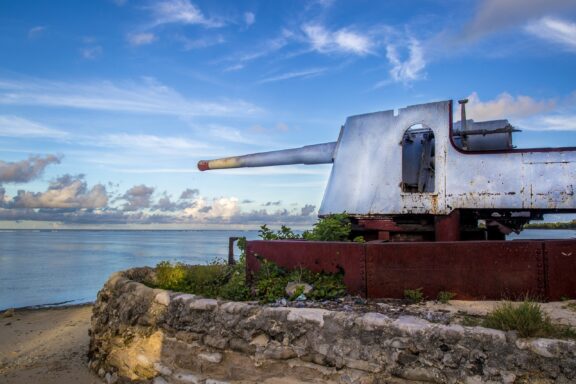
Red Beach, a site of immense historical significance, echoes one of World War II’s fiercest confrontations. Today, it is a somber reminder of the Battle of Tarawa, drawing history enthusiasts and travelers from all corners.
Beyond the allure of its historical relics, Red Beach offers an opportunity to reflect on the sacrifices of war. Guided tours often narrate the events leading up to the battle, while the serene beach setting allows visitors to relax, contemplate, and pay their respects.
2. Kiribati Uniting Church
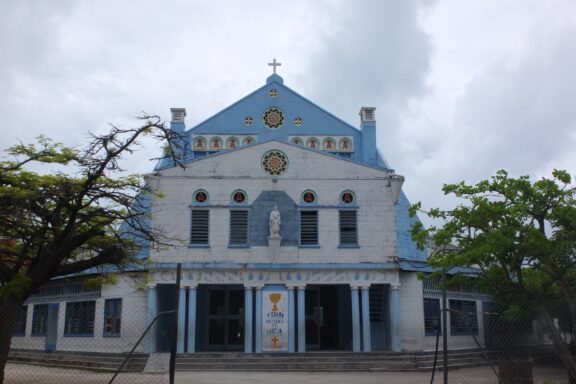
The Kiribati Uniting Church is a spiritual sanctuary and a testament to the enduring faith of the Kiribati people. Serving as a bridge between ancient traditions and modern beliefs, the church attracts devout followers and curious tourists.
Visitors can expect a warm welcome irrespective of their religious affiliation. Regular services offer a chance to witness the spiritual practices and hymns unique to the Kiribati Christian community.
3. Wander Around the Coast
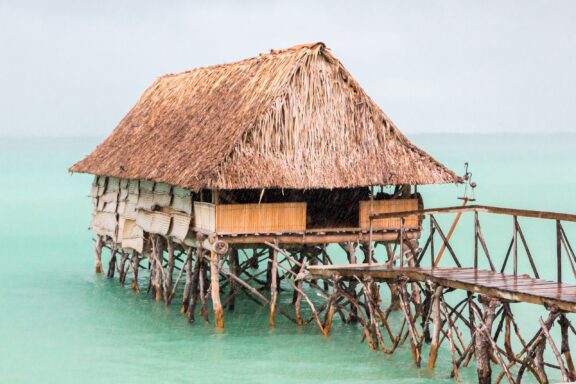
The lagoons of South Tarawa, with their serene blue waters, are accentuated by traditional bungalows that offer an authentic island living experience. A stay here promises unparalleled tranquility and a glimpse into the timeless lifestyle of the Kiribati people.
Guests are treated to the gentle lullaby of waves and a star-studded sky come nightfall. The bungalows, often part of eco-resorts, offer snorkeling, traditional fishing, and canoeing activities. Staying here is a chance to disconnect from the modern world and immerse oneself in the simple pleasures of island life.
4. North Tarawa
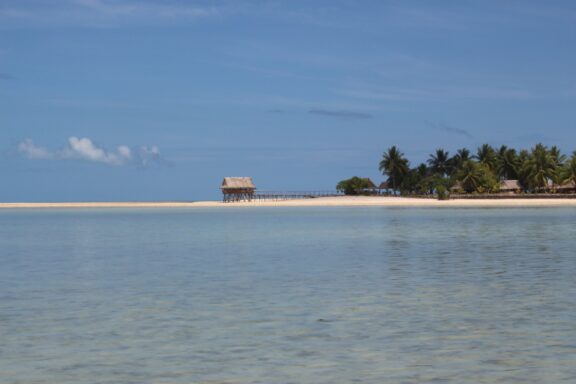
A paradise largely untouched by the hands of time, North Tarawa is the tranquil counterpart to the busier South Tarawa. With its pristine beaches and lush landscapes, North Tarawa offers a perfect getaway for those seeking solace and natural beauty.
Visitors to North Tarawa can explore untouched beaches, engage with local communities, and participate in traditional activities. With limited tourist infrastructure, the emphasis here is on sustainable and responsible tourism. It’s an ideal spot for those looking to escape the crowds and experience the Pacific’s beauty in its purest form.
Frequently Asked Questions
How can I get to Tarawa from the international airport?
Bonriki International Airport is located on South Tarawa itself. Upon arrival, you can take a taxi or local bus services, known as “buses,” to various parts of the atoll.
Are there any local customs or etiquette I should be aware of?
Yes, when visiting maneabas (traditional meeting houses) or local homes, it’s customary to wear modest clothing. It’s respectful to ask for permission before taking photographs of locals or their property.
Are there any local events or festivals that I can attend in Tarawa?
Kiribati has several cultural events and celebrations throughout the year. The Independence Day celebration on July 12th is the most significant, featuring dances, songs, and traditional games.
Is there any local transport available for getting around Tarawa?
Yes, local buses are a common mode of transport. Taxis are also available, and for those looking to explore at their own pace, some places offer bicycle rentals.
How do I ensure my safety and health while staying in Tarawa?
Basic precautions include drinking bottled or boiled water, protecting yourself from mosquito bites, and being cautious about sun exposure. It’s also good to check any travel advisories before your trip.
What local souvenirs can I buy from Tarawa?
Local crafts like woven mats, shell jewelry, and wooden carvings are popular souvenirs. Additionally, products made from coconut and pandanus are also sought-after items.
Is Tarawa vulnerable to natural disasters?
Tarawa is vulnerable to natural disasters, particularly rising sea levels due to climate change, king tides, and cyclonic events.
What kind of food can I expect in Tarawa?
The traditional cuisine of Tarawa has been shaped by its island geography and the abundant resources of the Pacific Ocean. For centuries, the I-Kiribati people have relied on the sea for sustenance, integrating fish, shellfish, and seaweed into their diet.
This, combined with locally grown staples like coconut, breadfruit, and pandanus, forms the foundation of Tarawa’s culinary heritage.
What are must-try authentic local dishes in Tarawa?
One is introduced to a delightful palate of authentic flavors when visiting Tarawa. Here are the top 4 dishes you must try:
1. Te Boki: A savory dish made from the rib meat of tuna fish.
2. Palu Sami: A delicacy made of taro leaves, coconut milk, and fish or meat, wrapped and baked.
3. Ikamai: A dessert made by rolling mashed bananas and pandanus in toddy, then baking them.
4. Te Riri: A rich coconut sap syrup often used as a sweetener or accompaniment.
Conclusion
Tarawa is a gem in the vast Pacific, offering a profound journey through time from its wartime history to its present-day resilience and cultural richness. Its unique blend of historical landmarks, pristine natural beauty, and genuine I-Kiribati hospitality makes it a compelling destination.
For those yearning for an authentic and insightful travel experience, Tarawa undoubtedly stands out as a destination worth every moment of exploration.
Image Sources and Copyright Information
- Map of Kiribati in the Pacific Ocean: © Peter Hermes Furian/Shutterstock
- Location Pin on Tarawa, Kiribati Map: © JoaoCachapa/Shutterstock
- Traditional Thatched Roof Structure in Tarawa: © Rafael Ávila Coya/Wikimedia | CC BY-SA 3.0 Unported
- WWII Japanese Pillbox on Tarawa Beach: © Vilimaka Foliaki/Flickr
- Tarawa Parliament Building with Cannon in Foreground: © maloff/Shutterstock
- Aerial View of a Narrow Tropical Island Strip: © Kyung Muk Lim/Shutterstock
- Flooded Coastal Village with Palm Trees: © maloff/Shutterstock
- Locals at a Market Stall: © Robert Szymanski/Shutterstock
- Coastal Landscape with Abandoned Tank: © Nava Fedaeff/Shutterstock
- Blue Church Building Under Cloudy Sky: © Robert Szymanski/Shutterstock
- Traditional Stilt House Over Turquoise Lagoon: © maloff/Shutterstock
- Tropical Beach with Hut on Stilts: © TGN1/Flickr